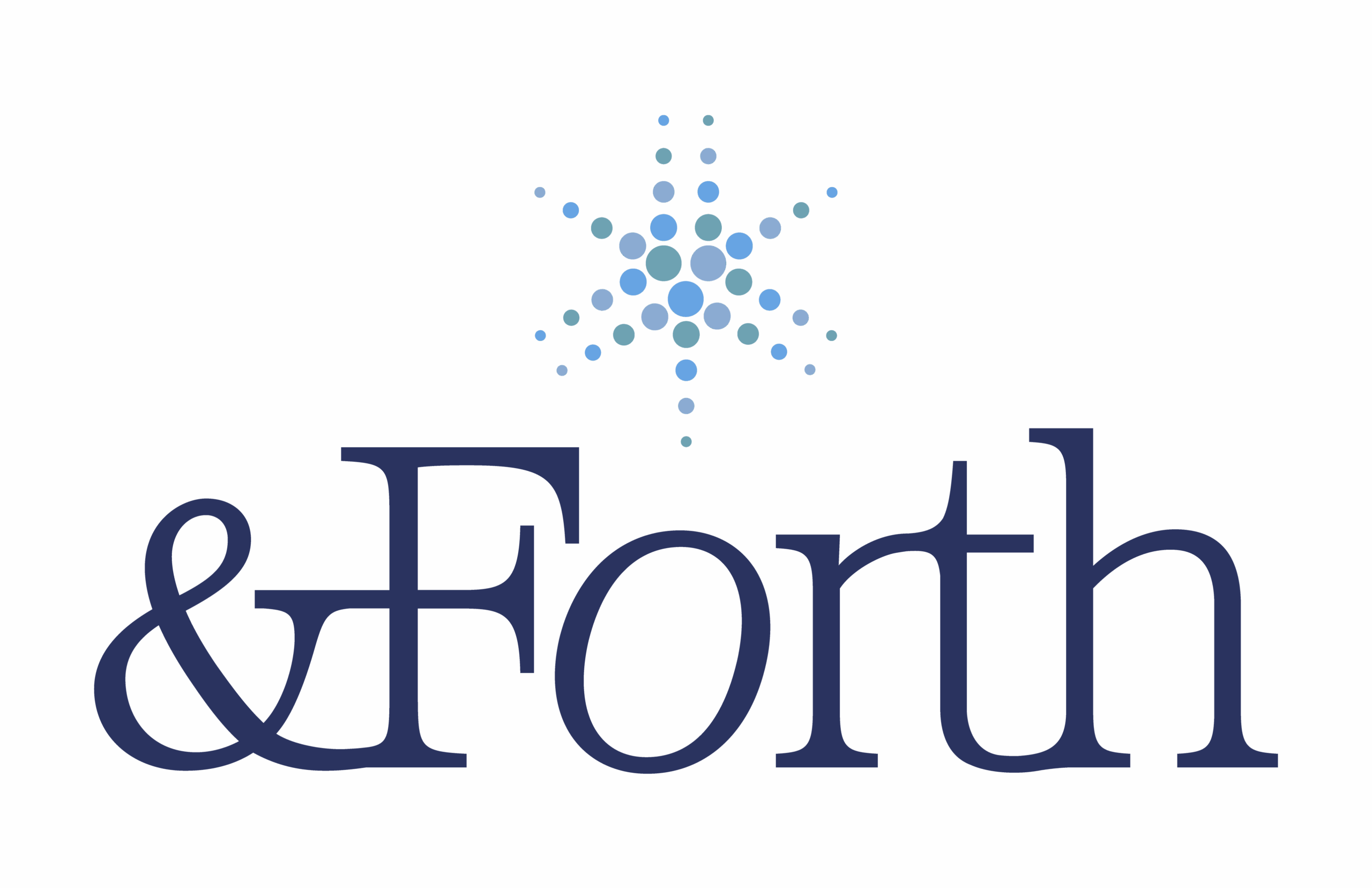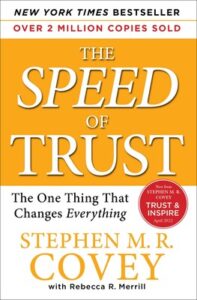The Third Wave: Organizational Trust, page 230.
- You now have the trust-building tools – the 4 Cores of Credibility and the 13 Behaviors.
- In this section, we will focus on the context in which you can use these tools to increase speed, lower cost, create value, and establish trust.
The Four Questions
- In our work with clients – before we even talk about the 4 Cores or the 13 Behaviors – we often ask four questions:
- How would you describe a low-trust organization?
- How would you describe a high-trust organization?
- Which description best represents your organization?
- What are the results?
- Participants typically say that in a low-trust organization, they see cultural behaviors such as the following:
- People manipulate or distort facts.
- People withhold and hoard information.
- Getting the credit is very important.
- People spin the truth to their advantage.
- New ideas are openly resisted and stifled.
- Mistakes are covered up and covered over.
- Most people are involved in a blame game or are bad-mouthing others.
- Water cooler talk is abundant.
- There are numerous “meetings after the meetings.“
- There are many “undiscussables.“
- People tend to overpromise and underdeliver.
- There are a lot of violated expectations, for which people try to make excuses.
- People pretend bad things aren’t happening or are in denial.
- The energy level is low.
- People often feel unproductive tension – sometimes even fear.
- People say that in high-trust organizations, they typically see different behaviors, such as these:
- Information is shared openly.
- Mistakes are tolerated and encouraged as a way of learning.
- The culture is innovative and creative.
- People are loyal to those who are absent.
- People talk straight and confront real issues.
- There is real communication and real collaboration.
- People share credit abundantly.
- There are a few “meetings after the meetings.“
- Transparency is a practiced value.
- People are candid and authentic.
- There is a high degree of accountability.
- There is palpable vitality and energy – people can feel the positive momentum.
- Questions for determining the results of your organization’s behaviors:
- What is it like to work in your company?
- What percentage of your time is focused on the real work?
- What is your ability to partner – internally? Externally?
- How are “sacred cows“ dealt with?
- How collaborative is your culture?
- What is innovation like?
- Are coworkers engaged?
- How well are people able to execute the strategy?
- Do people know what the organization’s priorities are?
- Do the decision-makers get the data they need – unfiltered?
- What are meetings like?
- What about ethics… is it a matter of compliance or doing the right thing?
- What is the span of control?
- What kinds of systems and processes are in place?
- What is the impact on speed?
- What is the impact on cost?
Organizational Trust
- Low organizational trust happens when people – particularly leaders – blame the behaviors of people in the organization on a low-trust environment without understanding their own responsibility to create, deploy, and maintain systems that promote an environment of high trust.
- “All organizations are perfectly aligned to get the results they get.“- Organizational design expert Arthur W. Jones
- “All organizations are perfectly aligned to get the level of trust they get.” – Stephen M.R. Covey
- So, if you don’t have the level of trust and the high-trust dividends you want in your organization, it’s time to look at the principles of alignment.
- It’s time to look at the structures and systems that communicate – far more eloquently than words – the underlying paradigms affecting cultural trust.
- As a leader, you can be successful at the Self Trust and Relationship Trust levels so that people trust you as a person but then fail at the Organizational Trust level by not designing and aligning systems that promote trust.
Symbols: Manifestations or Alignment (or Lack of It)
- We need to be mindful that our structures and systems are aligned with the principles that promote trust.
- These systems, structures, policies, etc. are powerful organizational symbols that represent and communicate underlying paradigms to everyone in the organization.
How to Effect Organizational Change
- If the symbols in your organization communicate and cultivate distrust – or less trust than you would like – go back to the 4 Cores with your organizational hat on. Ask yourself:
- Does my organization have Integrity?
- Do we know what we stand for?
- Do our structures and systems reflect a basic paradigm of respect and trust?
- Do we have a culture of honesty?
- Do we have a culture of humility?
- Do we listen to one another’s ideas?
- Can we make and admit mistakes?
- Do we have the courage to engage the tough issues?
- Do our systems and structure encourage ethical behavior?
- Does my organization have good Intent?
- Do we have a culture of caring – for one another?
- Do we have a culture of caring – for our work?
- Do we have a culture of caring – for our customer?
- Do we genuinely want everyone to win?
- Are the systems set up to reward competition or cooperation?
- Does the system encourage people to share ideas and information freely – or does it encourage people to withhold?
- What are the Capabilities of my Organization?
- Do we have the means to deliver value?
- Do we attract and retain the Talents, Attitudes, Skills, Knowledge, and Style (TASKS) we need to compete in today’s market?
- Do we have the right people in the right seats on the bus?
- Are we continuously improving and innovating?
- Do we reinvent ourselves, if needed?
- Does My Organization Get Results?
- Do we deliver what we promise?
- Can people rely on us to create value and fulfill commitments?
- Do we have a track record that promotes confidence?
- Do clients recommend us to others?
- Do we deliver results in a way that inspires?
- If you find your organization lacking in any of these areas, this is the place to begin to create and build Organizational Trust.
- Some of the same 4 Cores application ideas that work on the individual level will help create alignment on the organizational level as well. For example:
- Integrity
- Create or improve your organizational mission or values statement.
- Create a culture of making and keeping commitments.
- Intent
- Ensure that your mission and values reflect motives and principles that build trust.
- Set an example of caring.
- Demonstrate respect and show concern.
- Work to create systems that carry out a mutual benefit agenda.
- Reward cooperation instead of competition.
- Capabilities
- Take steps to ensure that the structures and systems in your organization are designed to attract and retain the talent you need to be competitive.
- Provide ongoing training and mentoring to ensure relevancy and satisfaction.
- Make sure your information system and decision-making systems are aligned with efforts to meet organizational and customer needs.
- Results
- Help create shared vision concerning desired results through a system that includes cascading goals and getting everyone on the same page.
- Create a “balanced scorecard,” in which results reflect meeting the needs of all stakeholders, not just owners.
- Create a culture in which people have the opportunity to account for results – not activities – regularly.
- Ultimately you want to make sure that your organization’s leadership paradigms are aligned with the principles that create trust.
- When leaders fundamentally don’t believe people can be trusted, they create systems and structures that reflect that belief.
- In turn, these systems and structures ultimately help produce the distrusting behaviors that validate the leaders’ perceptions that people can’t be trusted in the first place. It becomes a vicious, downward cycle.
The 7 Low-Trust Organizational Taxes
- If you don’t have a high-trust organization, you are paying a tax, and it’s a wasted tax.
- While these taxes may not conveniently show up on the income statement as “trust taxes,” they’re still there, disguised as other problems.
- Below are the hidden taxes in your organization:
- Redundancy
- Unnecessary duplications.
- Excessive organizational hierarchy.
- Overlapping structures.
- Paradigm: unless people are tightly supervised, they can’t be trusted.
- Bureaucracy
- Complex and cumbersome rules, regulations, policies, procedures, and processes.
- Excessive paperwork, red tape, controls, multiple approval layers, and government regulations.
- “Bureaucracy defends the status quo, long past the time when the quo has lost its status.” – Laurence Peters
- Low-trust breeds bureaucracy and bureaucracy breeds low-trust. In low-trust organizations, bureaucracy is everywhere.
- Politics
- “Politics“ is defined as the use of tactics and strategy to gain power.
- Office politics divide a culture against itself by creating the “enemy within“
- Office politics generate behaviors such as withholding information, infighting, trying to “read the tea leaves,“ operating with hidden agendas, inter-departmental rivalries, backbiting, and meetings after meetings.
- Disengagement
- Disengagement is what happens when people continue to work at a company but have effectively quit.
- They put in what effort they must to get their paycheck and not get fired, but they’re not giving their talent, creativity, energy, or passion.
- Their bodies are there, but not their hearts or their minds.
- There are many reasons for disengagement, but one of the biggest reasons is that people simply don’t feel trusted.
- As the age-old question goes, “Which came first, the chicken (distrust) or the egg (disengagement)? It’s a self-perpetuating cycle that gradually grinds the organization to a crippled pace, or even to a halt.
- Turnover
- Performers like to be trusted and they like to work in high-trust environments.
- High-performers feel insulted when they’re not trusted.
- Unwanted turnover is expensive. On average, it cost companies one and a half to two times the annual salary to replace an exiting worker.
- Churn
- Churn is the turnover of stakeholders other than employees.
- Employees tend to treat customers the way they are treated by management.
- Fraud
- Fraud is flat-out dishonesty, sabotage, obstruction, deception, and disruption.
- To tighten the reins and put more controls in place, we will reduce the fraud tax only slightly, and in doing so, trigger the other six taxes, which are cumulatively far greater.
- The key is to strengthen the cultural values; without them, there are not enough means to enforce compliance everywhere.
The 7 High-Trust Organizational Dividends
- Increased Value
- According to a 2002 study, high-trust organizations outperformed low-trust organizations in total return to shareholders by 286%.
- Accelerated Growth
- The research clearly shows that customers buy more, buy more frequently, refer more, and stay longer with companies and people they trust.
- Enhanced Innovation
- Strong cultures of innovation only thrive in an environment of high trust.
- Innovation and creativity demand several important conditions to flourish, including information sharing, an absence of caring about who gets the credit, a willingness to take risks, the safety to make mistakes, and the ability to collaborate.
- Improved Collaboration
- High-trust company environments foster the collaboration and teamwork required for success in the new global economy.
- Collaboration is different than the traditional approaches of coordination and cooperation.
- Without trust, collaboration is merely cooperation.
- Stronger Partnering
- Relationships that rely on contract language, and not on a relationship of trust, fair far worse.
- Better Execution
- High-trust companies are better able than low-trust companies to execute their organization’s strategy.
- It is better to have grade-B strategy and grade-A execution than the other way around.
- Execution is significantly enhanced by trust.
- Heightened Loyalty
- High-trust companies elicit far greater loyalty from their primary stakeholders – coworkers, customers, suppliers, distributors, and investors – than low-trust companies.



